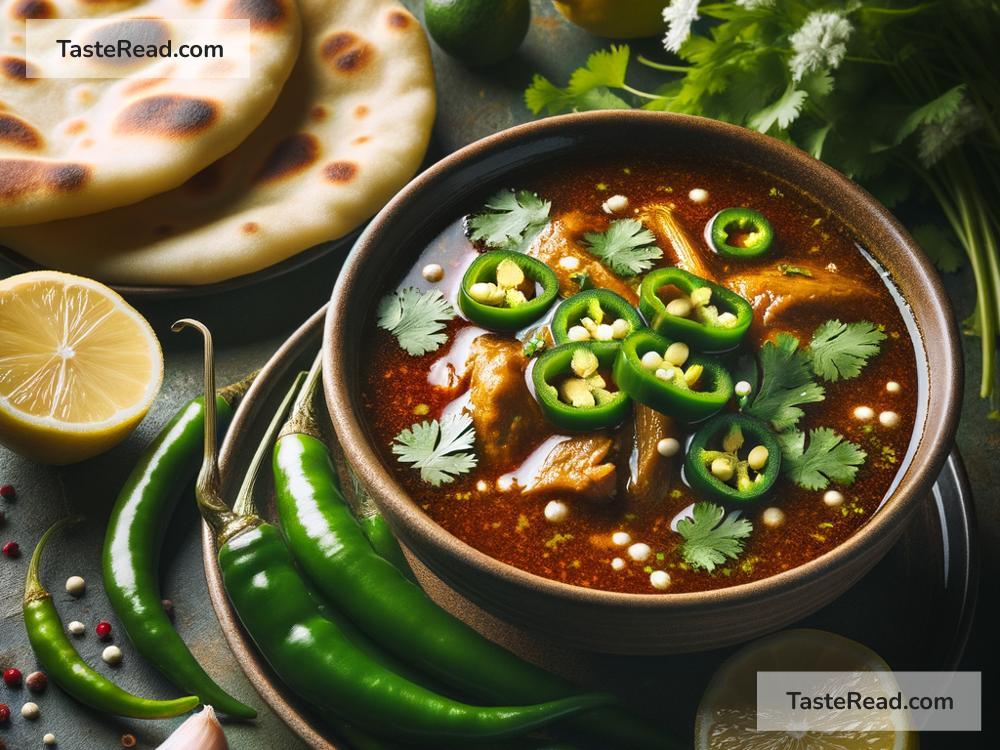Exploring the Vibrant Flavors of Pakistani Nihari: A Culinary Journey
Have you ever taken a bite of a dish so rich and flavorful that it transports you to a different place? That’s the magic of Pakistani Nihari. A stew that commands attention with its bold flavors and tender meat, this traditional dish is a celebration of Pakistani cuisine’s complexity and culture. Exploring the vibrant flavors of Pakistani Nihari is not just about tasting a dish; it’s about embarking on a culinary journey that is as rich in history as it is in taste.
The Origins of Nihari
Nihari’s journey began in the royal kitchens of the Mughal Empire, several centuries ago. Originally concocted as a breakfast dish for the Islamic nobility, it was designed to provide strength and vitality. The word “Nihari” comes from the Arabic word “Nahar,” meaning “morning.” Over time, Nihari traveled from the royal courts to the streets, capturing the hearts and palates of the common people, eventually becoming a beloved staple across Pakistan.
What is Pakistani Nihari?
At its core, Nihari is a slow-cooked stew, typically made with beef, mutton, or chicken. The meat is simmered overnight or for up to 8 hours, which ensures it’s not just cooked but tender enough to fall off the bone – a feature that defines a good Nihari. The magic of Nihari, however, lies in its spice blend. A concoction of spices including ginger, garlic, cayenne pepper, turmeric, cardamom, and nutmeg (among others) gives Nihari its distinctive flavor. Coriander leaves, fried onions, green chilies, and ginger slices are also added as garnish, enhancing both its appeal and flavor.
The Nihari Experience
The first spoonful of Nihari is a revelation. The meat, soft and succulent, pairs beautifully with the thick, spicy broth, creating a symphony of flavors. Every bite is a piece of history, bringing you closer to the rich culinary traditions of Pakistan. Nihari is traditionally served with Naan, a soft and fluffy bread, perfect for dipping into the luscious gravy, making sure not a drop is wasted.
Eating Nihari is not just a meal; it’s an experience. It’s often enjoyed in the early hours of the morning, especially during winter, providing warmth and comfort. However, its popularity has made it a dish that can be savored at any time of the day. Whether it’s a family gathering, a festive celebration, or a regular day craving for something hearty and flavorsome, Nihari stands as a favorite choice for many.
Cooking Nihari at Home
The idea of cooking Nihari at home might seem daunting due to its long list of spices and the slow cooking time. However, the process can be quite meditative and rewarding. Begin by selecting the right cut of meat; shank pieces are preferred for their marbled fat that melts into the gravy, enriching it. The key to a perfect Nihari lies in the balance of spices and the patience with which it is cooked. Pre-made Nihari spice mixes are available, but for a more authentic experience, try making your spice mix at home. The slow simmering not only cooks the meat but also allows the spices to meld beautifully, creating a depth of flavor unmatched by any quick cooking method.
Vegetarian Twist
While traditional Nihari is all about the meat, a vegetarian version can also capture the essence of this delightful stew. Using root vegetables and legumes offers a texture akin to meat, and cooking them with the same blend of spices provides a similar sensory experience.
Conclusion
Exploring the vibrant flavors of Pakistani Nihari offers more than just a taste of traditional Pakistani cuisine; it offers an experience steeped in history, culture, and communal joy. Whether you’re enjoying it at a restaurant, cooking it at home, or experimenting with a vegetarian version, Nihari promises a journey for the senses. This dish is not just food; it’s a celebration of life’s rich, complex, and beautiful flavors. So next time you have the chance, dive into the world of Nihari and let it take you on a culinary adventure you won’t forget.


